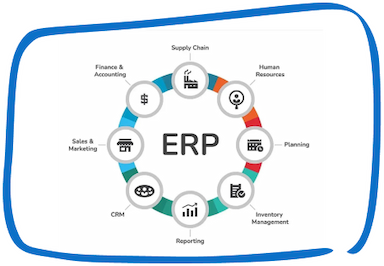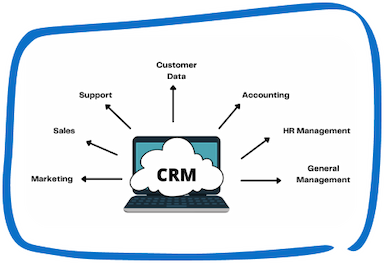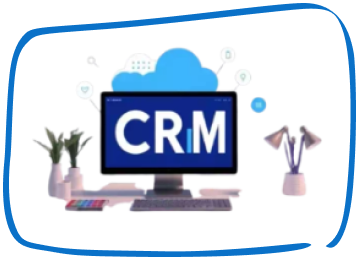The ERPNext team is excited to unveil ERPNext/Frappe version 15, which comes with an array of fresh features, enhancements, and improvements aimed at elevating your business’s efficiency.
Migration Guide for ERPNext/Frappe Version 15
Updates include the separation of modules from ERPNext into new apps. It aligns with the trend from the previous year. Several modules have been relocated as independent apps:
- TaxJar Integration
- Exotel Integration
- Lending
- ERPNext France
- The E-commerce module shifted from ERPNext to Webshop.
- Payment gateways moved from ERPNext to Payments.
- KSA localization-specific code moved to KSA.
Certain modules were deprecated and subsequently removed entirely from ERPNext:
- Social Media module
- WooCommerce integration
How does this transition impact users?
If you’re not currently utilizing any of these modules, this change will not affect your operations.
For users relying on any of these modules, upon upgrading to ERPNext/Frappe version 15, installing the relevant app on your bench will be necessary.
Simplify Your Business Operations with ERPNext
Streamline all your business functions with ERPNext’s integrated solution. From inventory to HR management, ERPNext provides a unified platform to optimize operations.
From a user’s perspective, this change won’t alter functionality; there will be no loss of features.
To report new issues or pull requests, you’ll need to address them in the respective repository rather than the ERPNext repository.
New Features in ERPNext/Frappe Version 15:
Stock Reservation for Sales Orders:
Stock reservation, also referred to as inventory reservation, involves allocating a specific quantity of stock or inventory for a particular purpose or customer.
Serial and Batch Reservation:
In this latest version, we’ve introduced the Serial and Batch Bundle feature. This feature facilitates the linking of Serial/Batch Numbers in Stock transactions. Before ERPNext/Frappe version 15, the Serial Number field was a Small Text field, allowing multiple serial numbers to be contained within a single column. However, this design led to several data integrity issues. To address this, we’ve transformed the Serial Number field from Small Text to a Link field in version 15. Since it’s not feasible to include a child table within another child table, we’ve introduced a new doctype called “Serial and Batch Bundle” to handle the picking/dispatching of multiple Serial/Batch numbers.
Whenever dealing with Serial/Batch numbers, a Serial and Batch Bundle must be created and linked to stock transactions. Users are required to create a distinct “Serial and Batch Bundle” for each transaction and cannot link the same bundle to multiple transactions.
Multi-level BOM Creator:
The Multi-level BOM Creator empowers users to generate multi-level Bill of Materials (BOMs) through a single interface.
Purpose of the BOM Creator:
Users often question the necessity of a distinct BOM Creator for crafting BOMs. The rationale behind its existence lies in streamlining the process and eliminating unnecessary iterations. Using the standard BOM screen, users are required to first create all sub-assembly BOMs before generating the BOM for the final product. This back-and-forth process can be cumbersome. Furthermore, visualizing the complete hierarchy becomes challenging within the standard BOM structure.
To address these issues, the BOM Creator has been introduced. Within this tool, users can construct multi-level BOMs using a tree component, simplifying the entire process.
Recording Advance Payments as a Liability:
Customers/suppliers make advance payments before the issuance of an invoice, categorizing them as Advance Payments. These advance payments are automatically allocated exclusively against orders.
Generally observed in high-value deals, advance payments serve as a commitment from the customer/supplier. For instance, if a customer, Jane D’Souza, places an order for a luxury furniture item worth 4986 AED, the furniture house might request an advance payment before commencing work. Jane provided 2545 AED in cash as an advance.
In ERPNext, you create an advance payment entry using Payment Entry. If there’s a Sales Order, you can directly generate a Payment Entry for the advance amount. Alternatively, you can create a standalone Payment Entry for the customer. Likewise, for a supplier, you can make an advance Payment Entry via a Purchase Order.
Item-Wise TDS Calculation and Item Tax Template:
The Item Tax Template proves valuable for item-specific taxation scenarios.
When specific items have tax rates differing from the standard tax rates assigned in the Taxes and Charges table, the creation of an Item Tax Template becomes pertinent. This template can be assigned to an individual item or an item group. The tax rate designated in the Item Tax Template takes precedence over the standard tax rate specified in the Taxes and Charges table.
If you add VAT to the Taxes and Charges table in a Sales Order, it will apply to all items in that order. However, for specific items requiring a different tax rate, follow the steps below:
To access the Item Tax Template list, navigate to Home > Accounting > Taxes > Item Tax Template.
Payments-based dunning:
Dunning is a persistent demand for debt payment, specifically intended for unpaid Sales Invoices. It serves as a document stored and sent to prompt debtors for payment. To access the Dunning list, navigate to Home > Accounting > Dunning.
Prerequisites:
You can only create a Dunning against a Sales Invoice that is overdue.
Dunning Type:
Dunning Type assists in pre-filling interest, fees, and text blocks in a new Dunning.
Utility to repost accounting ledgers without cancellation:
A significant change has been implemented in ERPNext from version 13 onwards, altering the functionality of the Accounting Ledger (General Ledger) and Stock Ledger. Ledger immutability is crucial for various reasons:
- Reposting future entries is computationally intensive. Backdated transaction posting necessitates reposting all subsequent entries.
- Regeneration of the entire sequence in the Stock Ledger (using the FIFO valuation method) can disturb valuations and profit for subsequent transactions.
- Taxes paid for a specific period might change.
Provision for auto-creating Exchange Rate Revaluation:
ERPNext supports accounting entries in multiple currencies. The Exchange Rate Revaluation master aims to adjust General Ledger account balances in response to fluctuations in currency exchange rates. This adjustment is beneficial while closing accounting books to update the Company’s GL accounts with changes from other currency accounts.
Provision for sending Accounts Receivable Reports using Process SOA:
Process Statement Of Accounts (SOA) facilitates the bulk emailing of Statement Of Accounts (General Ledger Report) and Ageing (Accounts Receivable Summary) Reports to customers as PDF attachments, either manually or automatically at regular intervals.
This feature is advantageous when notifying customers periodically about their pending transactions, such as Sales Invoices. The PDF attachment in the emails sent to customers contains details like invoice posting dates, Sales Invoice numbers, and debit and credit specifics relevant to their accounts, serving as a reminder for unpaid invoices.
To access the Process Statement Of Accounts list, either search in the navbar or navigate to Home > Accounting > Tools > Process Statement Of Accounts.
Reconcile Payments in the background:
Payment Reconciliation serves to establish links between payments and invoices. In intricate scenarios, particularly within the capital goods industry, direct connections between payments and invoices may not always exist. For instance, a customer might submit block payments or adhere to a payment schedule unrelated to your invoices.
In such instances, Payment Reconciliation allows the matching of Payments with Invoices. To access Payment Reconciliation, navigate to Home > Accounting > Accounts Receivable > Payment Reconciliation.
Update Items for Subcontract Purchase Order:
Subcontracting involves outsourcing specific tasks, especially in manufacturing, to an external party. It enables multiple phases of a project to run simultaneously, often expediting completion.
Various industries, such as those manufacturing complex products from intricate components, may subcontract certain components, packaging them at their facilities. In ERPNext, if your business entails outsourcing processes to a third-party Supplier, where you provide raw materials and the third party handles the labor/production, you can track this by utilizing the subcontracting feature.
Incoterms in buying and selling:
Incoterms represent standardized trade terms widely used in international commercial transactions. They delineate the buyer’s and seller’s responsibilities, encompassing goods’ transfer and payment, ensuring mutual understanding of obligations and rights. The International Chamber of Commerce (ICC) regularly updates Incoterms to reflect evolving trade practices.
The “named place” designates the agreed-upon location where the buyer and seller fulfill obligations and rights under the Incoterm. For instance, in the Incoterm FOB (Free on Board), the named place is the port of shipment, where the seller’s duties end upon goods’ placement on board the vessel. In CIF (Cost, Insurance, and Freight), the named place is the port of destination, signifying the seller’s fulfillment upon goods’ delivery to that location.
The named place is integral to Incoterms, delineating responsibilities and costs associated with the transaction. Employing Incoterms helps prevent misunderstandings, ensuring smooth and efficient transaction completion.
Support for Alternative Items in Quotation:
In manufacturing, Item Alternatives represent items resembling the original, capable of substituting it. When the specified raw material in the Bill of Materials (BOM) is unavailable during production, manufacturers can use accessible alternative items to complete the production process.
Customizable ERP Solution with ERPNext
Tailor ERPNext to suit your unique business needs. With fully customizable modules, ERPNext offers a powerful solution for growing businesses.
Last thoughts:
Are you presently utilizing ERPNext/Frappe version 13 or 14 and wish to leverage these latest enhancements? Penieltech is here to help you upgrade seamlessly with extensive ERPNext customization.
Speak with Our Team!
4.9 Stars
1k+ reviews on






